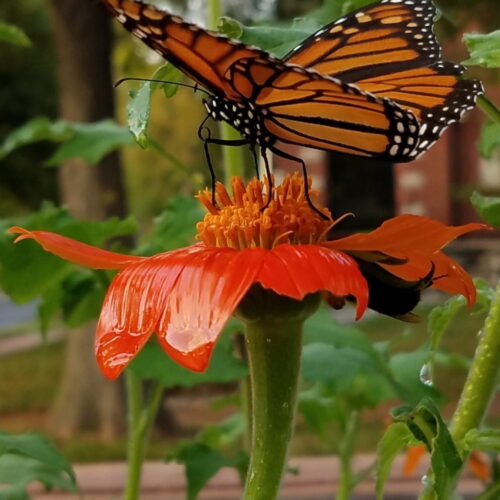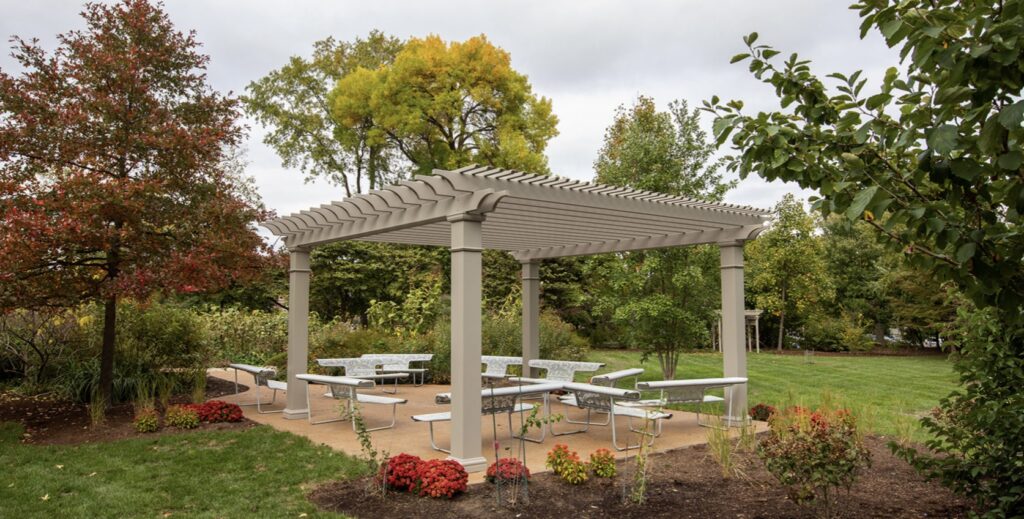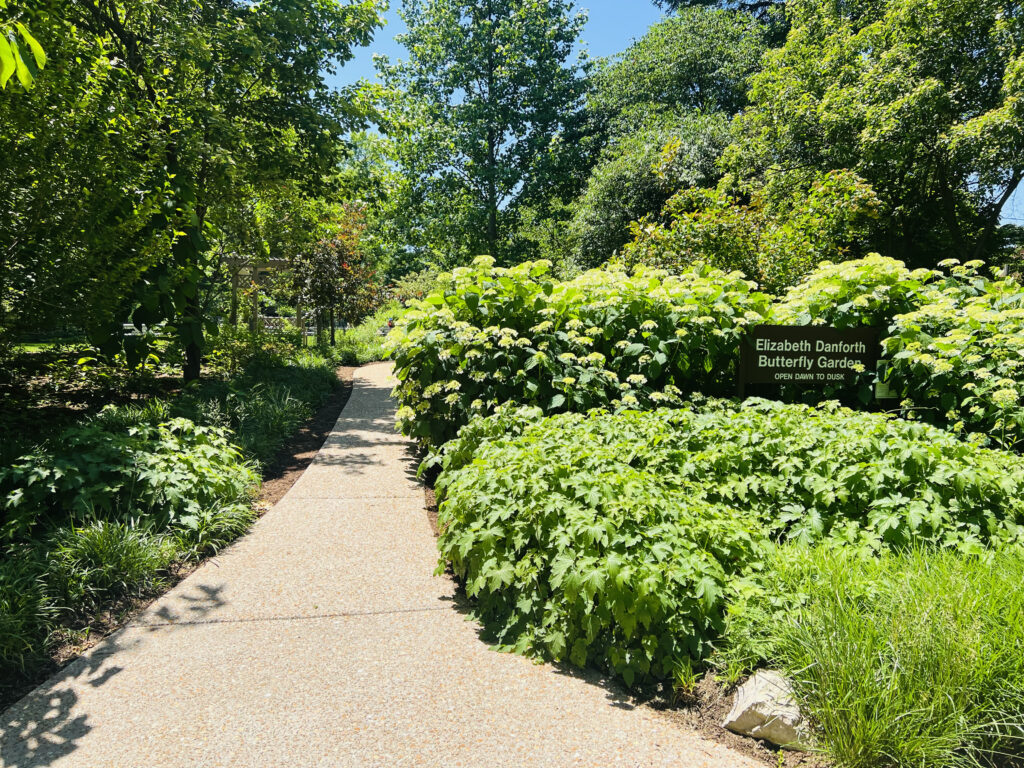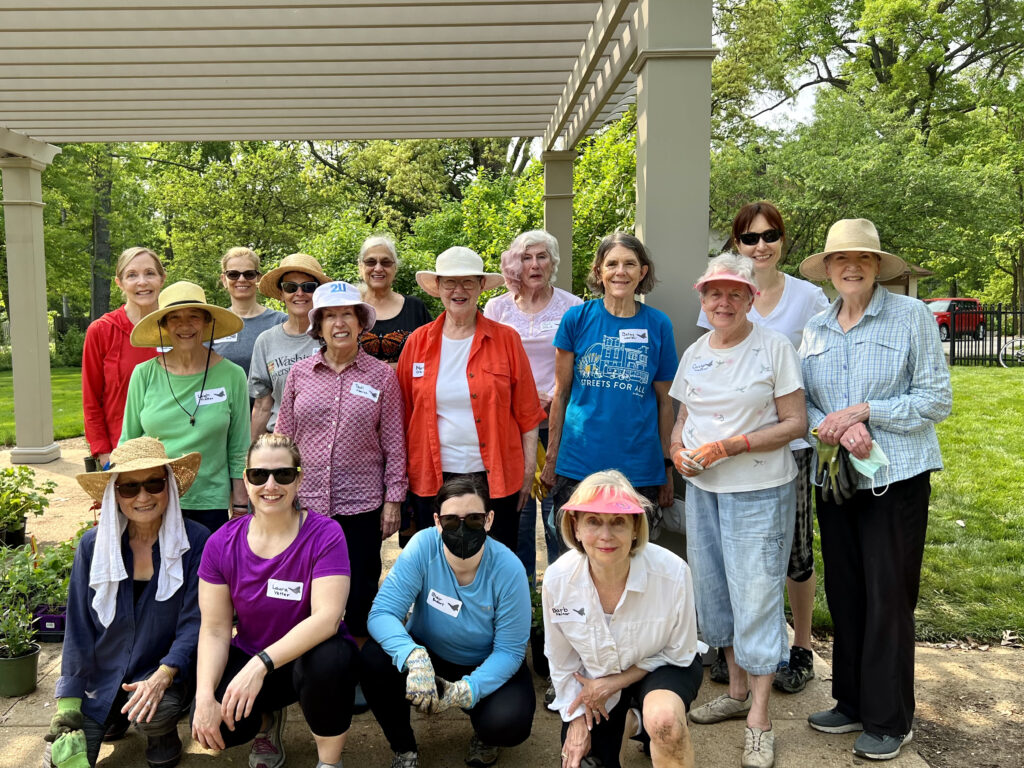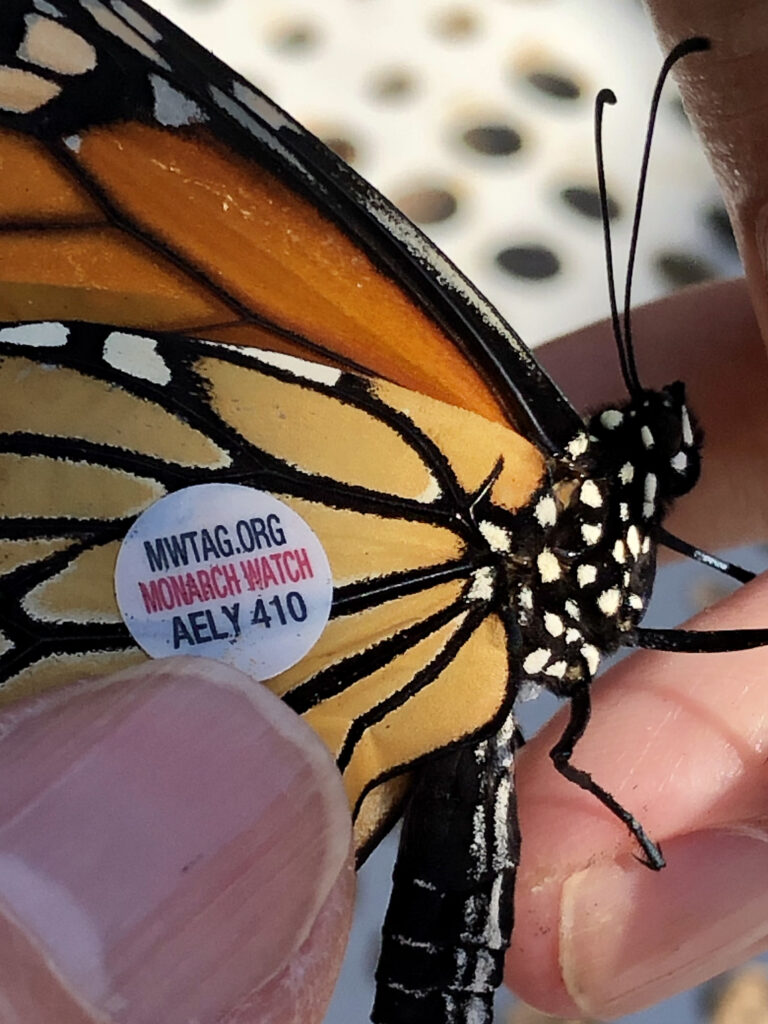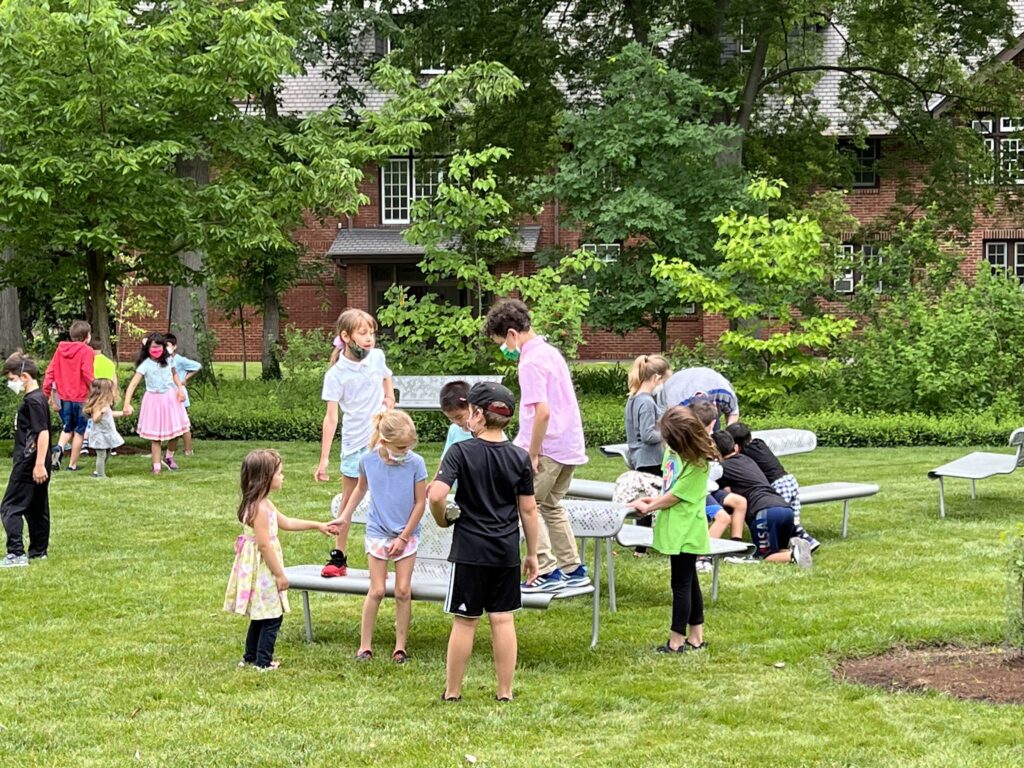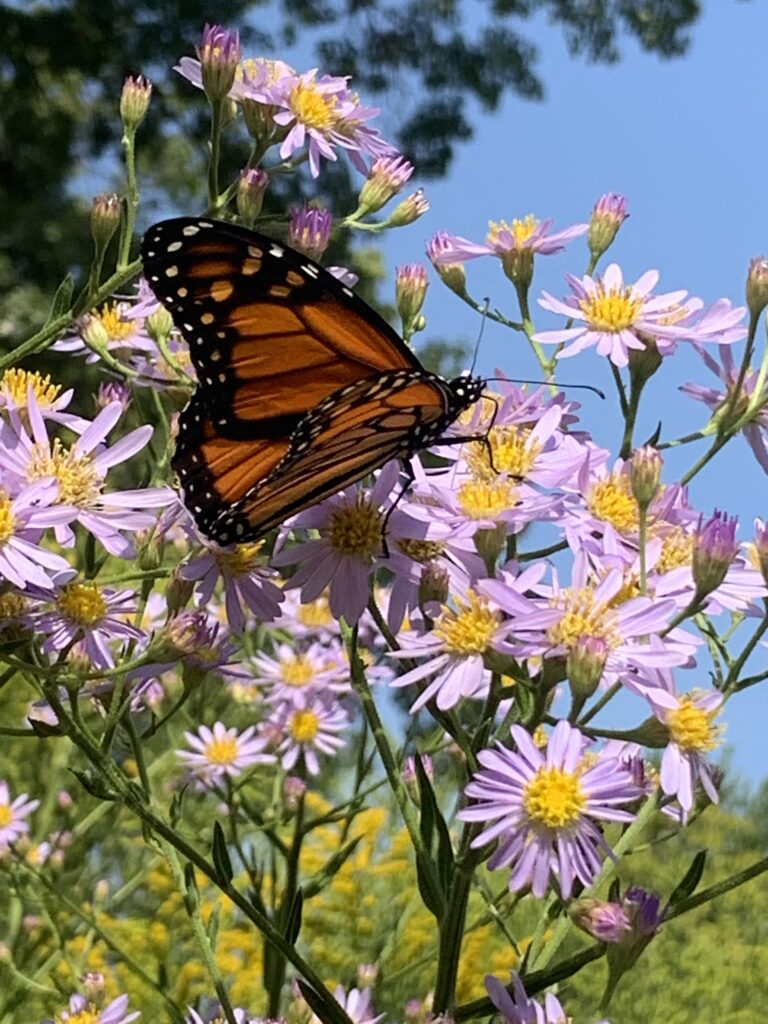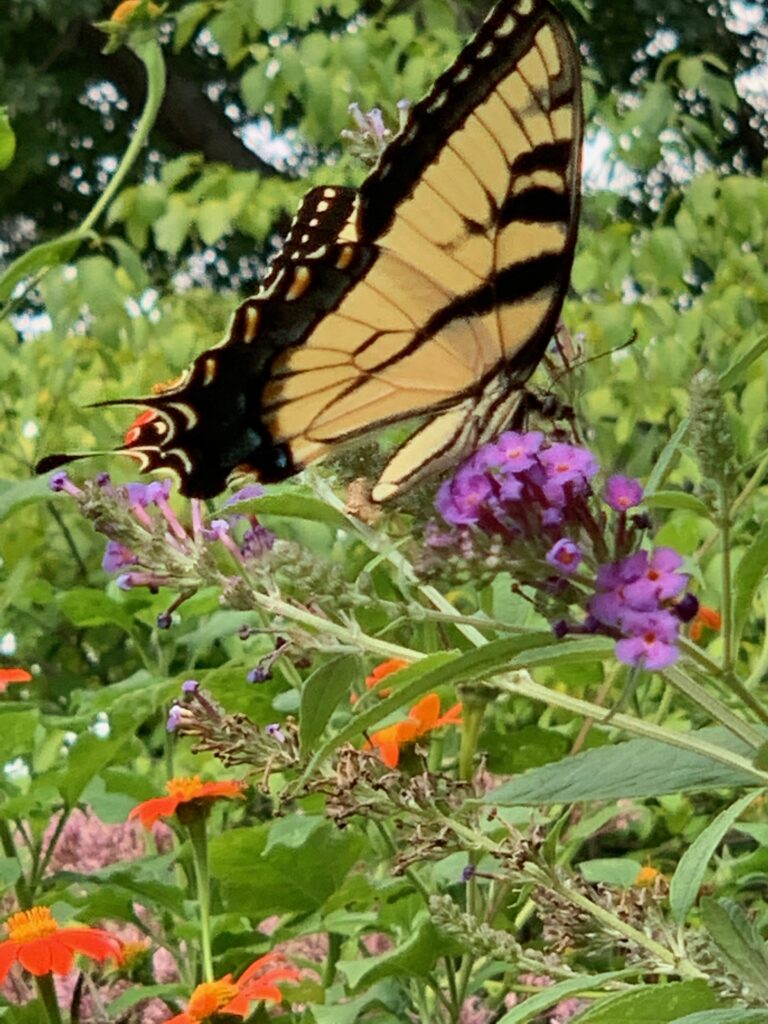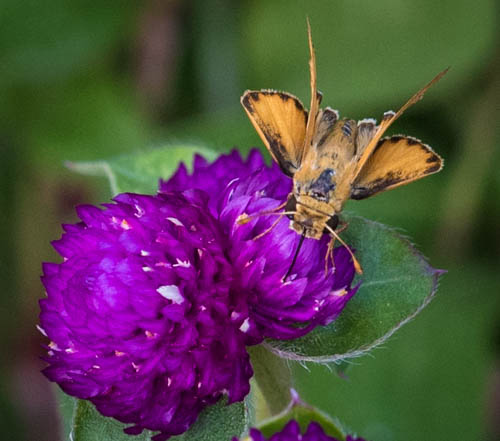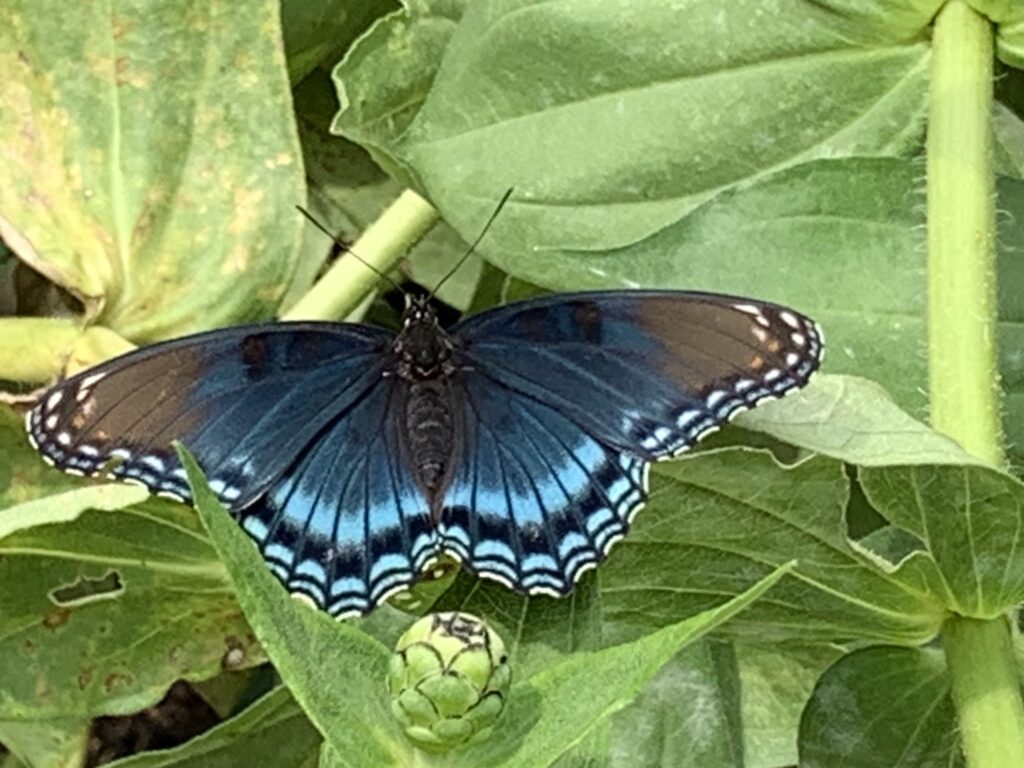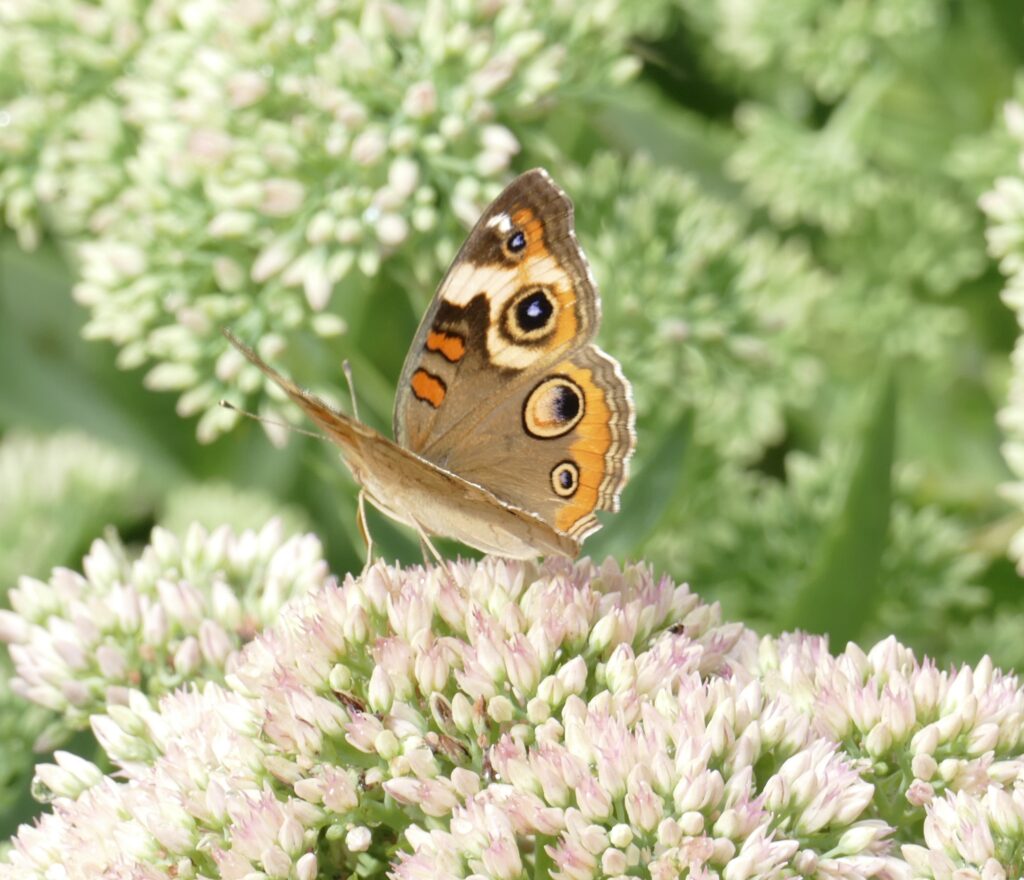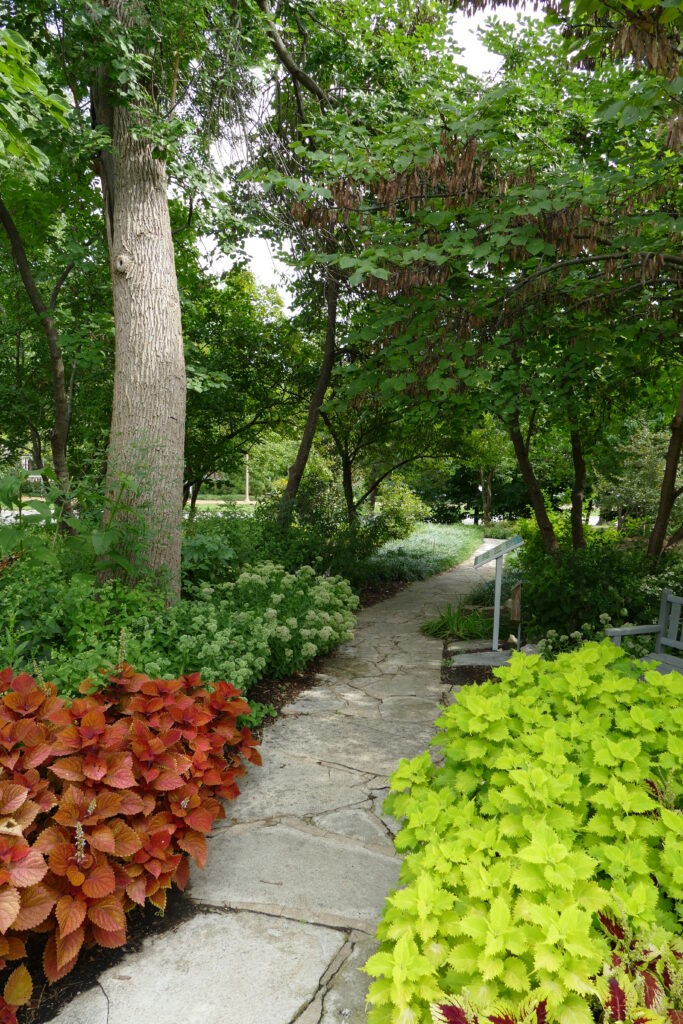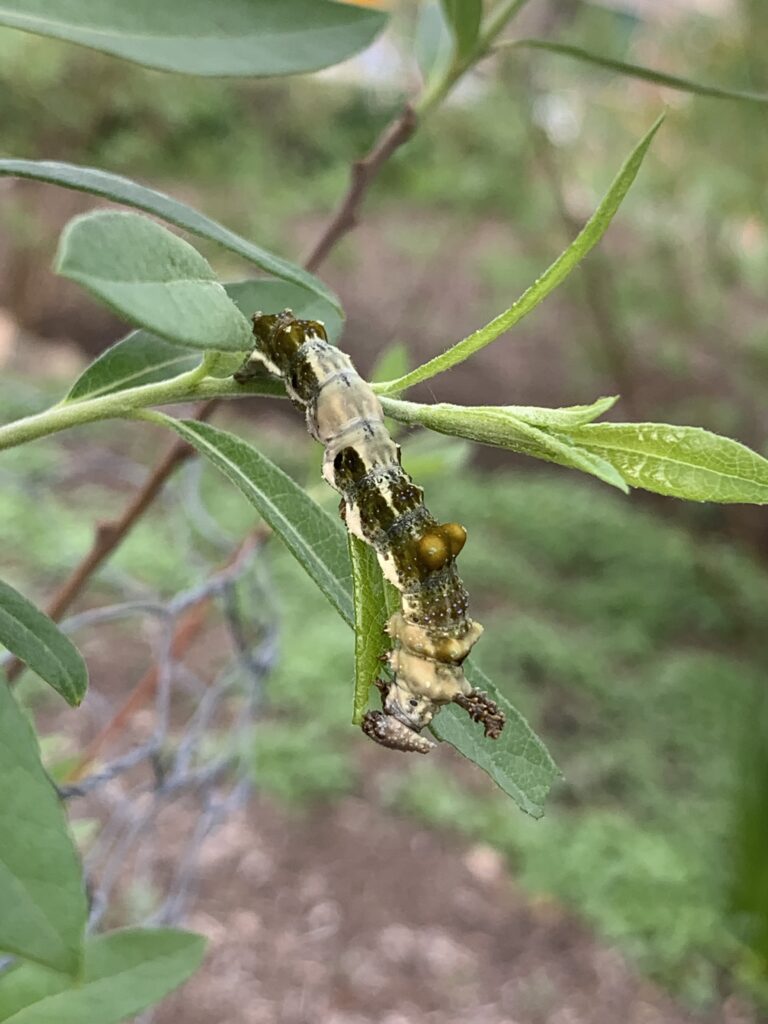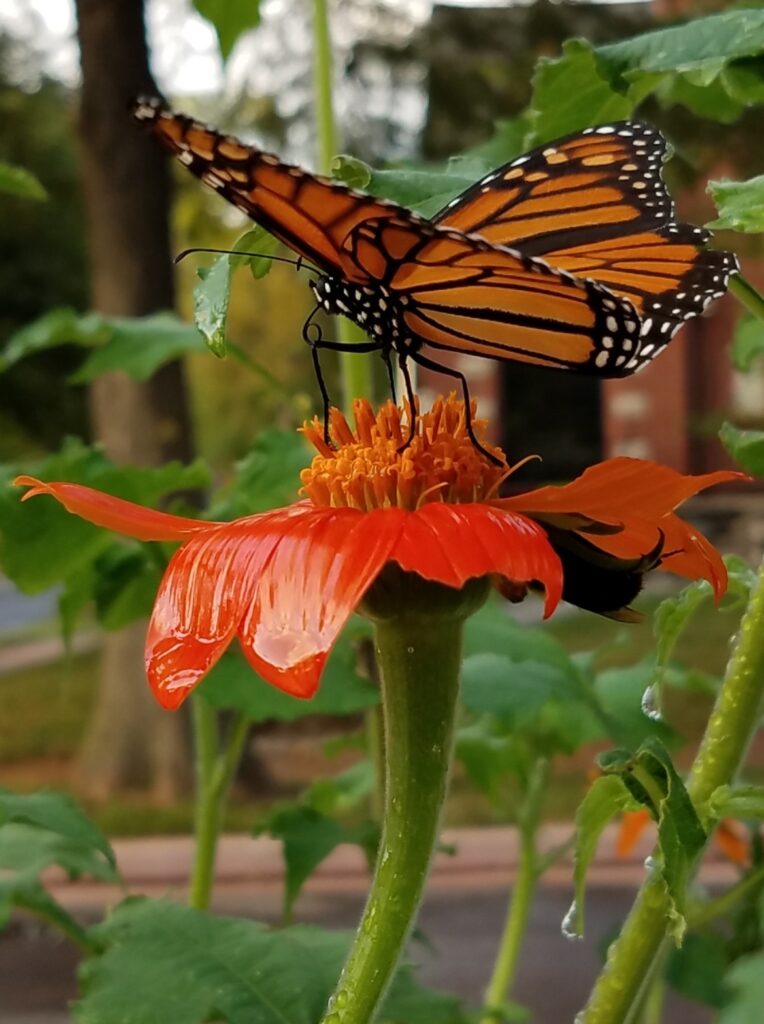Ibby’s Garden was designed by June Hutson, the outdoor project coordinator at the Missouri Botanical Garden. The Woman’s Club was the primary donor for the project. The Club was involved in all parts of the developmental process, from original designs to physical planting and continues to maintain the garden.
The Woman’s Club of Washington University dedicated this garden to Elizabeth Gray Danforth in 1996 to honor her 24 years of wonderful service during William H. Danforth’s chancellorship.
The garden features the native plants that midwestern butterflies, declining in number, need for all four stages of their life cycle.
Located on Danforth Campus at the intersection of Forsyth and Wallace Drive, the garden is a relaxing, natural area attractive to WashU students, faculty and staff, neighbors, local schools, and various groups of nature enthusiasts. The Butterfly Garden committee, partnered with Washington University Facilities, has developed the garden for 25 years, adding benches, picnic tables, and an arbor. Generous donations to the Butterfly Garden 25th Anniversary Gift Fund made the addition of a spacious pergola and hardscape enhancements possible in 2021. Our volunteers have been raising Monarch and Swallowtail butterflies from eggs and releasing the adult butterflies into the garden to educate the public and to raise the number of Monarchs for migration. The garden qualified for certification as a Monarch Waystation from the national Monarch Watch organization in 2016. In 2021 we began participating in the Monarch tagging program through the University of Kansas. The Butterfly Garden endowment and the generosity of Washington University supports annual planting and operating expenses.
How Can You Help?
The Butterfly Garden Committee meets to work in the garden every Tuesday morning in the spring, summer, and fall, when weather permits. We invite new volunteers to join us anytime. Contact co-chairs Lee Anne Quatrano or Elena Maksaeva.
Looking for another way to support Ibby’s Garden? You can also make a tax-deductible gift.
Butterfly Garden Guide
The Woman’s Club of Washington University dedicated this garden to Elizabeth Gray Danforth in 1996 to honor her 24 years of wonderful service during William H. Danforth’s chancellorship.
THANK YOU FOR RESPECTING THE BUTTERFLY GARDEN AS A TRANQUIL SPACE. PLEASE REMEMBER TO:
- Stay on the paths in the inner garden
- Observe the butterflies and plants without disturbing them
- Enjoy the lawn for supervised energetic activities

Spicebush Swallowtail
Papilio troilus
This butterfly is named for the Spicebush, the food source of its three broods of green larvae. In its flying stage this butterfly will take nectar from many flowers.

Zebra Swallowtail
Protographium marcellus
This butterfly will only eat Pawpaw tree leaves when in the larval stage. When a butterfly, it eats nectar from flowers.

Pipevine Swallowtail
Battus philenor
This shimmering butterfly eats the native Pipe Vine which gives the larva an acrid taste. Many butterflies mimic the Pipe Vine Swallowtail, misleading predators.

Eastern Tiger SwallowtailPapilio glaucus
This butterfly with tails on its hind wings uses the leaves of tulip, hop, apple and plum trees as its larval food and nectar from flowers for energy.
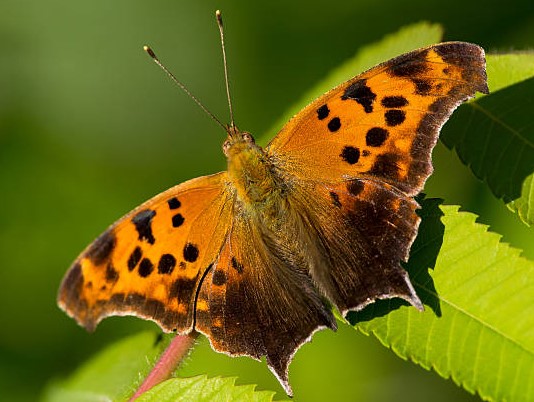
Question MarkPolygonia interrogationis
This butterfly gets its name from the shape of wings that look like a question mark. It hibernates in winter and eats elm and hackberry leaves as its larval food source.
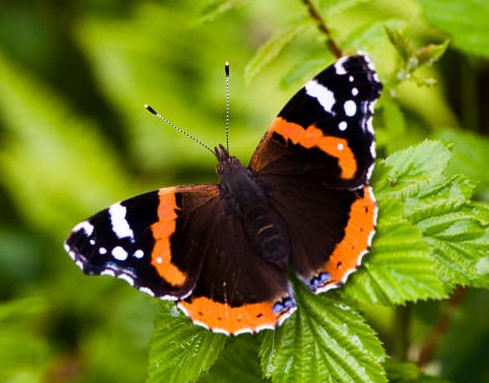
Red Admiral
Vanessa atalanta
This butterfly has an almost continuous orange circle on the dorsal (top) side. Both the adult and the pupa hibernate in winter, and there are several generations per year.
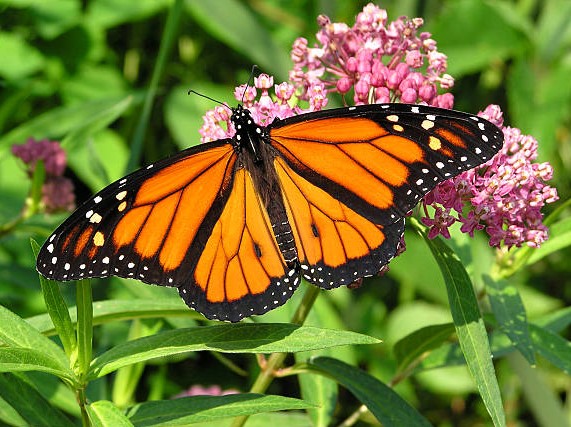
Monarch
Danaus plexippus
The larva eats only milkweed plants and as a result tastes bitter to predators. This butterfly migrates to Mexico. In the spring it flies north with many generations developing before fall.

Painted Lady
Vanessa cardui
This butterfly with white spots migrates north and is seen in April. The larva prefers thistles and in the flying stage takes nectar from flowers.
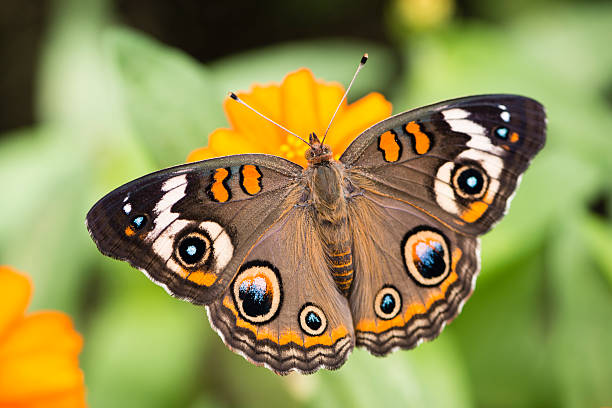
Buckeye
Junonia coenia
This butterfly migrates south- always staying where it is warm enough to continue the butterfly life cycle. The larva feed on Plantain, Sedum, and Vervain, and in the flying stage the Buckeye uses the nectar from flowers for energy.

Great Spangled Fritillary
Speyeria cybele
This butterfly has only one generation each year. It eats violet leaves in its larval stage and many flowers for their sweet nectar in its flying stage.

Silver Spotted Skipper
Epargyreus clarus
This butterfly holds its wings up and moves quickly. It is the most easily recognized of the many skippers because of the bright white patch on both hind wings.

Cabbage White
Pieris rapae
This butterfly is a European native and was found in North America in 1860. The food source of its larva is the cabbage family. Seen from March to October, it continues to lay eggs.
HOW YOU CAN HELP
The committee of volunteers works in the garden Tuesday mornings each week from March through October, weather permitting. We are delighted to welcome anyone interested in joining, and no commitment is necessary. We all come when our schedules permit. Email Lee Anne Quatrano for details.
ABOUT THE GARDEN
The Elizabeth Danforth Butterfly Garden is a Woman’s Club of Washington University service project dedicated in 1996 to honor Elizabeth (Ibby) Danforth, the wife of retiring Chancellor William H. Danforth. This garden, located on the Danforth Campus at the intersection of Forsyth and Wallace Drive, is a relaxing site and natural area attractive to students, faculty and staff, neighbors, and local schools. The Butterfly Garden committee, with the partnership of Washington University Facilities, has developed the garden for 25 years, adding benches, picnic tables, and an arbor. Generous donations made the addition of a spacious pergola and hardscape enhancements possible in 2021 to celebrate the Butterfly Garden’s 25th anniversary. The garden qualified for certification as a Monarch waystation from the national Monarch Watch organization in 2016. In 2021 we began participating in the Monarch tagging program through University of Kansas. The Butterfly Garden endowment and the generosity of WU supports annual planting and operating expenses. The garden has more than 90 native Missouri trees and shrubs in addition to many flowering plants needed by butterflies for food and habitat.
